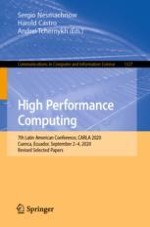2021 | Book
High Performance Computing
7th Latin American Conference, CARLA 2020, Cuenca, Ecuador, September 2–4, 2020, Revised Selected Papers
Editors: Sergio Nesmachnow, Ph.D. Harold Castro, Andrei Tchernykh
Publisher: Springer International Publishing
Book Series : Communications in Computer and Information Science
